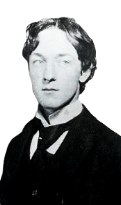
William James Glackens was a U.S. realist painter.
Glackens studied at the Pennsylvania Academy of the Fine Arts and later moved to New York City, where he co-founded what came to be called the Ashcan School art movement. This group of artists, dubbed by the press "the Eight Independent Painters" or The Eight, chose to exhibit their works without pre-approval by the juries of the existing art establishment. He became known for his dark-hued paintings of street scenes and daily life in the city's neighborhoods. His later work was brighter in tone, and showed the influence of Renoir. During much of his career as a painter, Glackens also worked as an illustrator for newspapers and magazines in Philadelphia and New York City.
Glackens’s subject matter and style changed throughout his life. Influenced by the Impressionist work he saw during his stay in Europe, Glackens’s early work uses “dark, dramatic colors applied vigorous in slashing brushstrokes.” He depicted scenes of urban life in Paris and its suburbs. He continued this style and subject matter for some time until he began to break away from The Eight. At that point his most common subject matter was landscapes, especially beach scenes. Later Glackens became best known for his portraits, and late in his life he focused on still-lifes. Despite the changing subject matter, Glackens’s work always emphasized the reality of life and also the happiness. He “sought beauty and found it where conventional eyes saw ugliness.”) Watson asserts that Glackens focused on color because “the color of the world makes him thoroughly happy, and to express that happiness in color has become his first and most natural impulse.” He painted because he wanted to show the beauty of the world. His paintings are “haunted by the spectre of happiness, obsessed with the contemplation of joy.”
Glackens is often criticized for his similarity to Renoir. Some even call him an imitator. After the Exhibition of Independent Artists in 1910, Glackens’s style shift was quickly compared to Renoir’s style. It is said that during the 1920s and 1930s “his once vigorous artistic personality had been blunted by too close imitation of Renoir’s late style.” Glackens’s interest in color likens him most to Renoir; Watson claims Glackens to have a “rich palette akin to Renoir’s to express his pure delight in color.”
Glackens is compared to Pascin because they were both “among the best illustrators of their day.” They both used life for their subjects, and also cared about portraying how they view the world. But one strong similarity is the way they both are able to see and emphasize the “humorous aspects” of life.